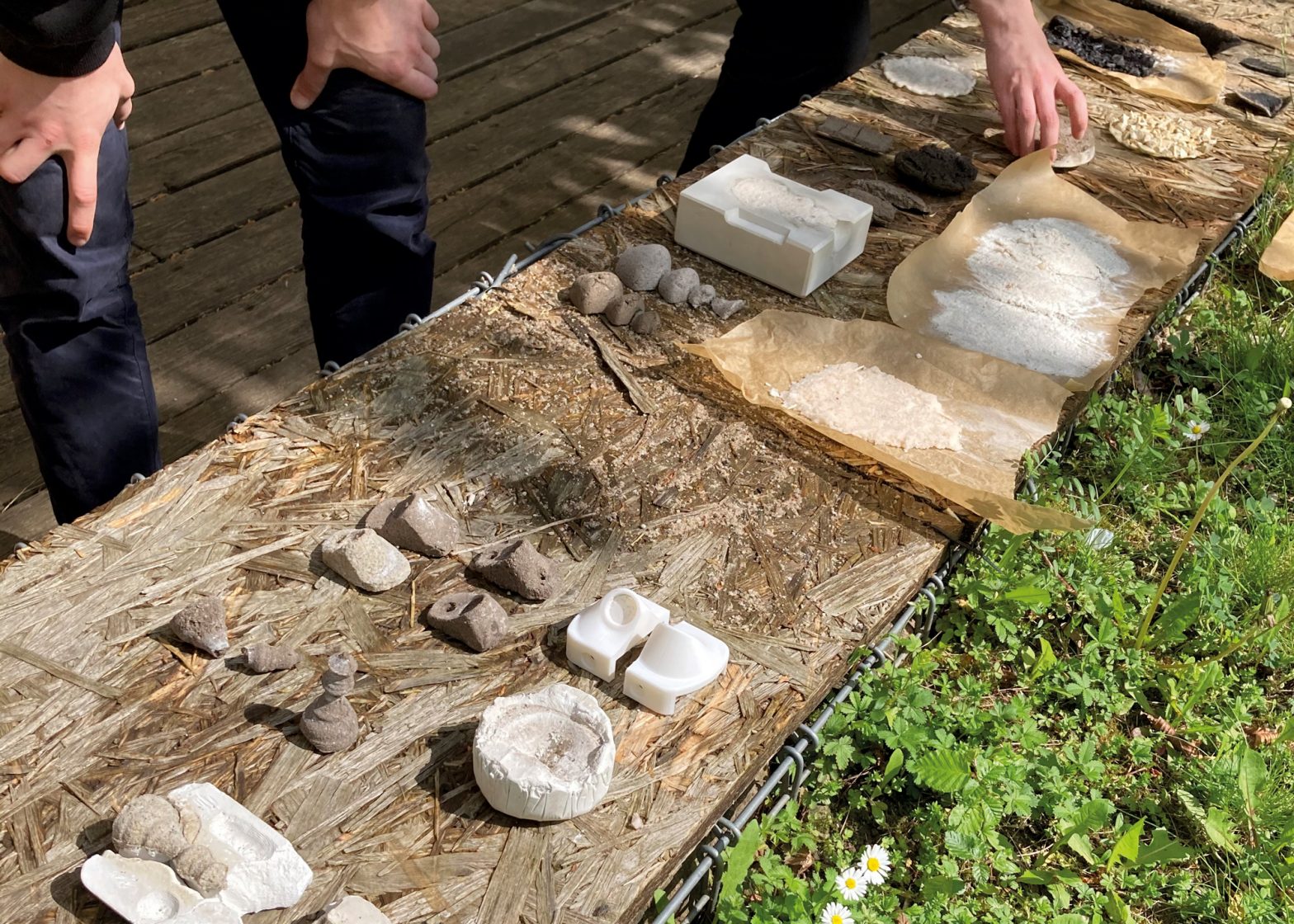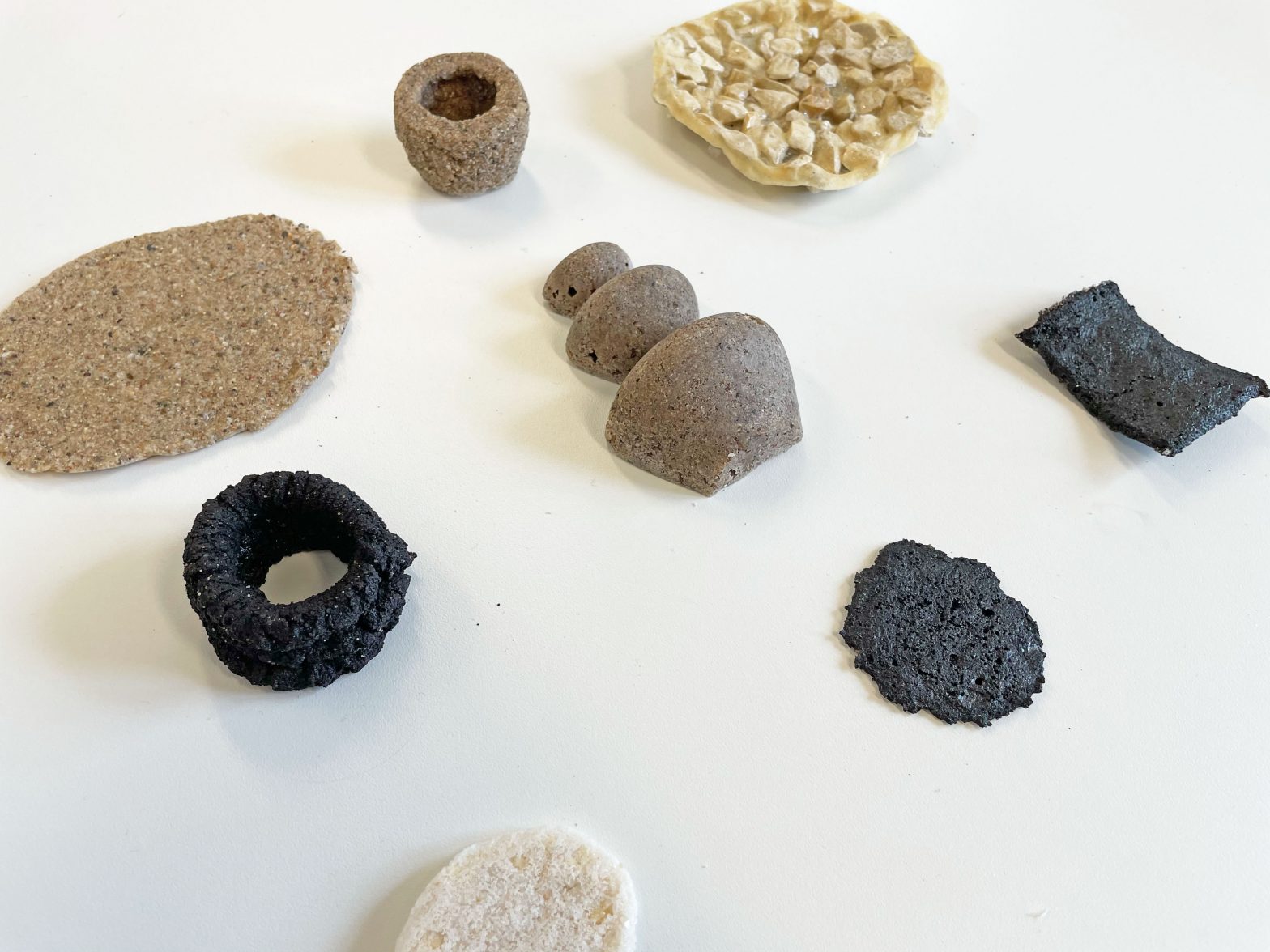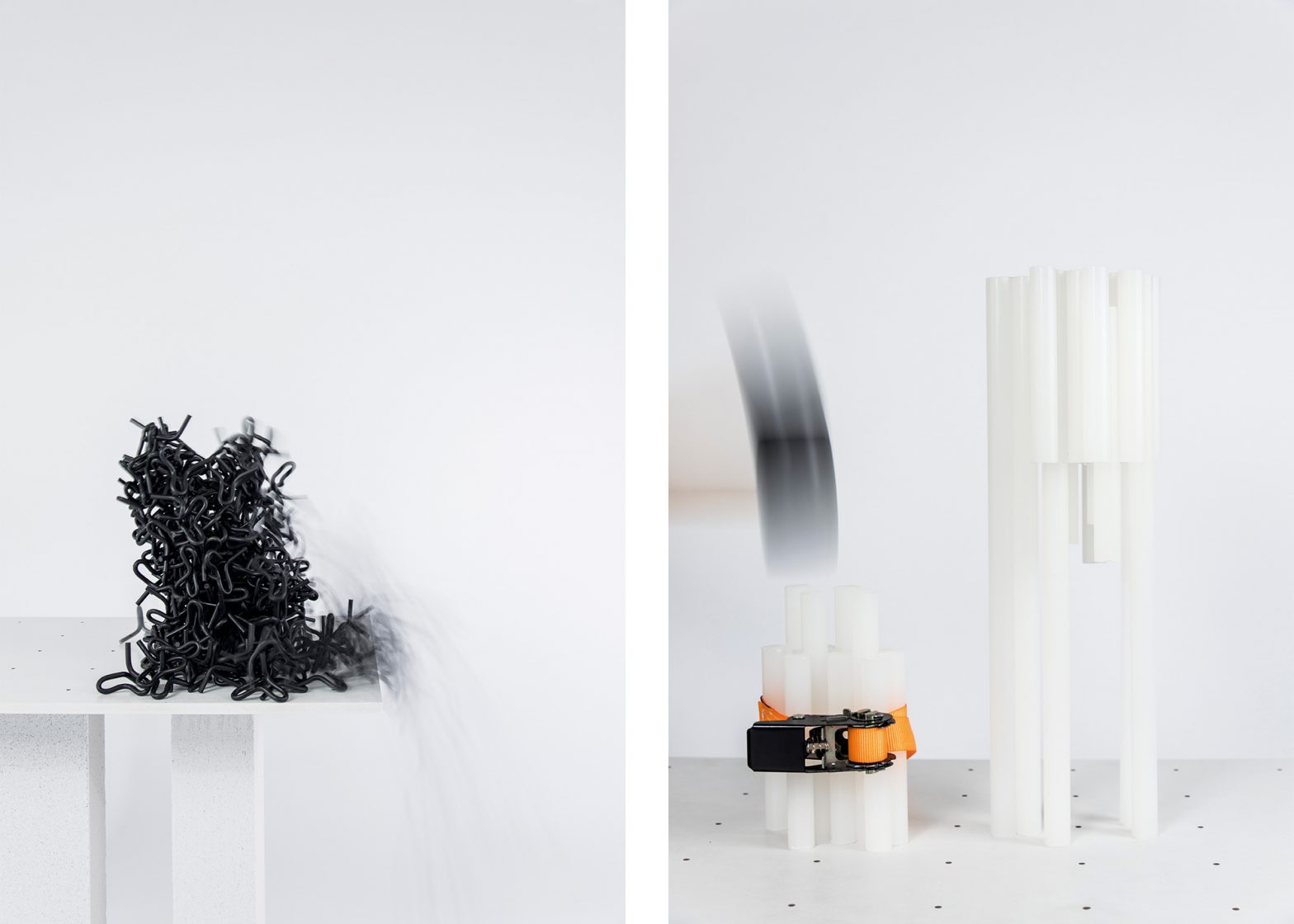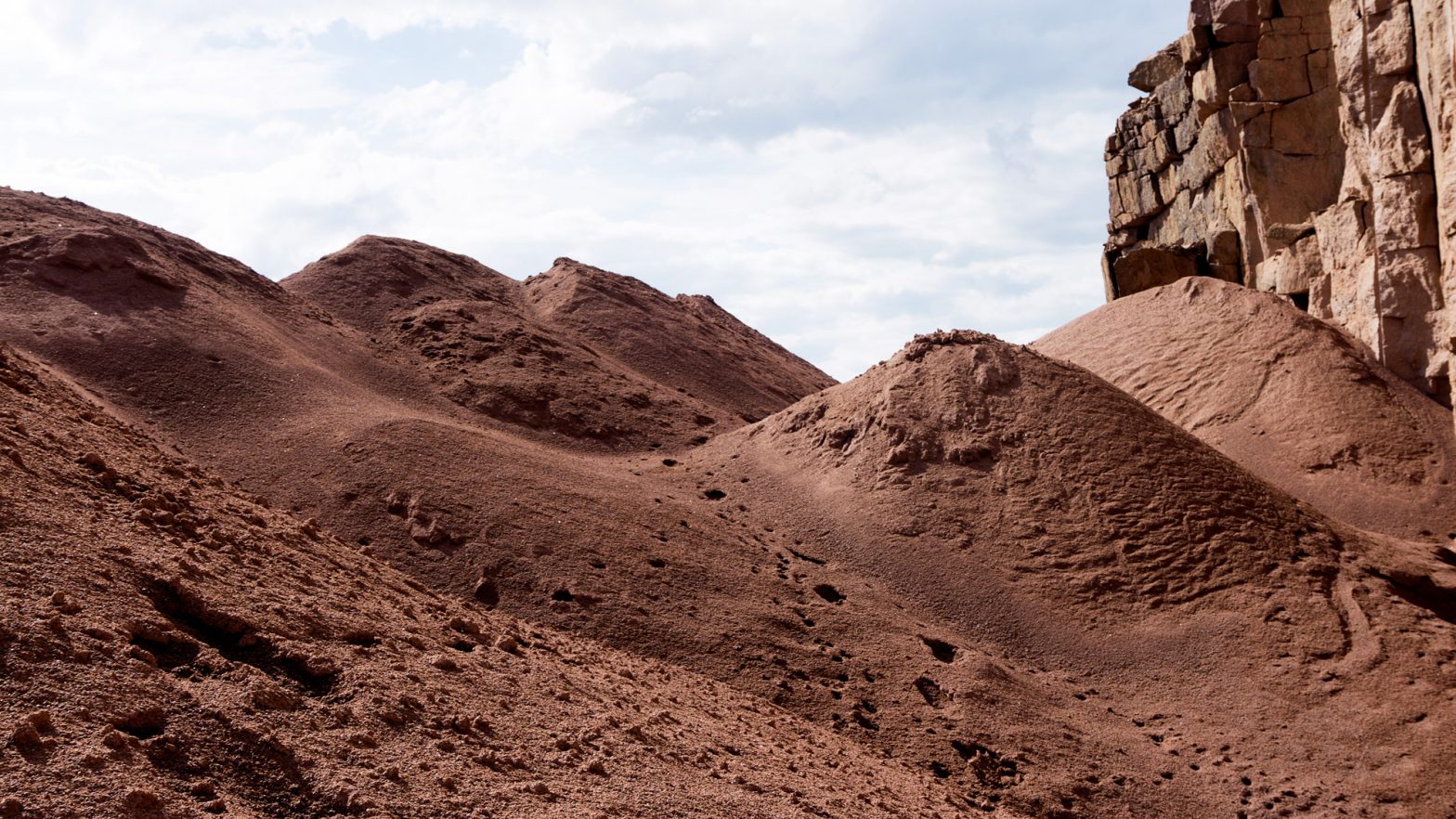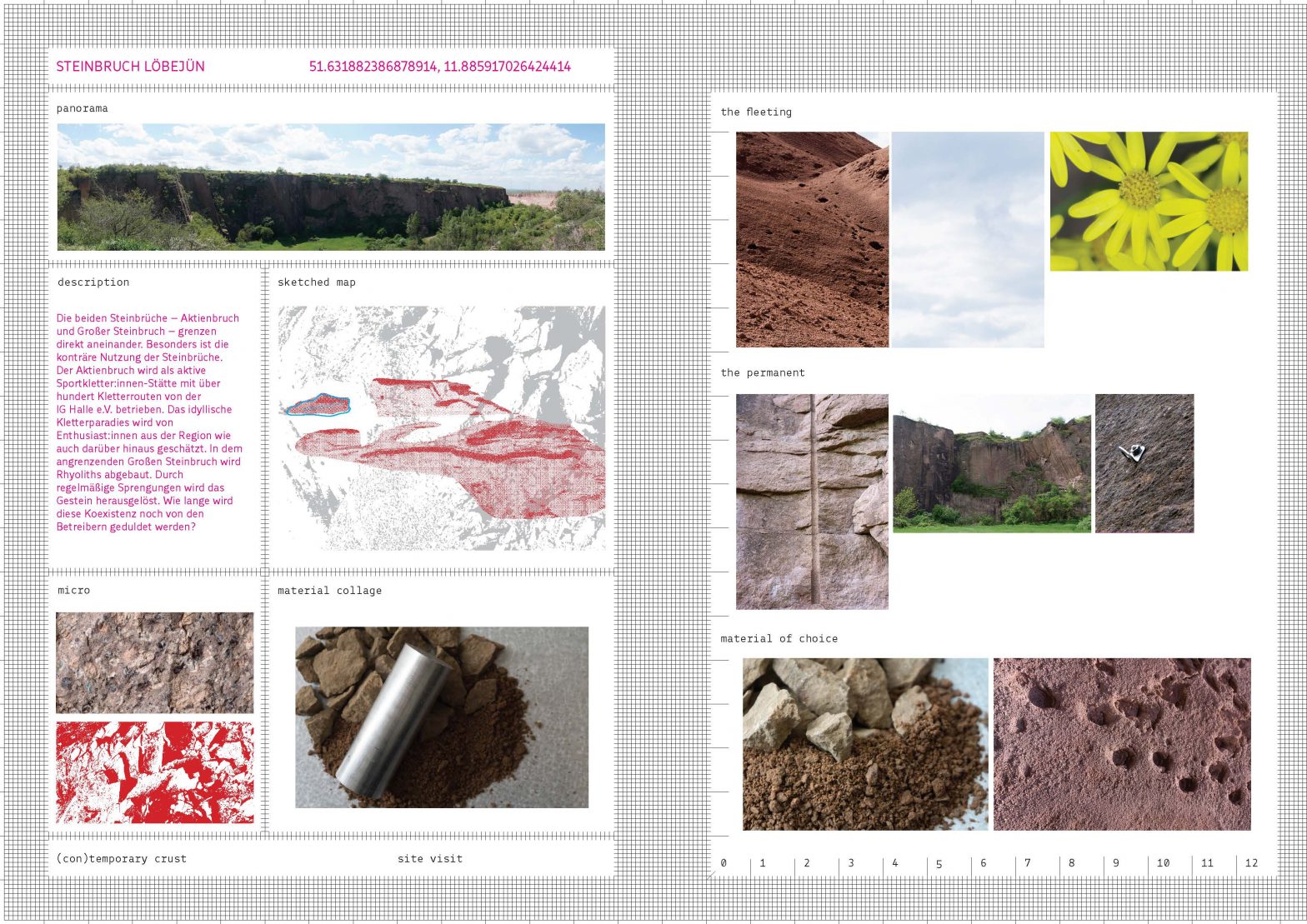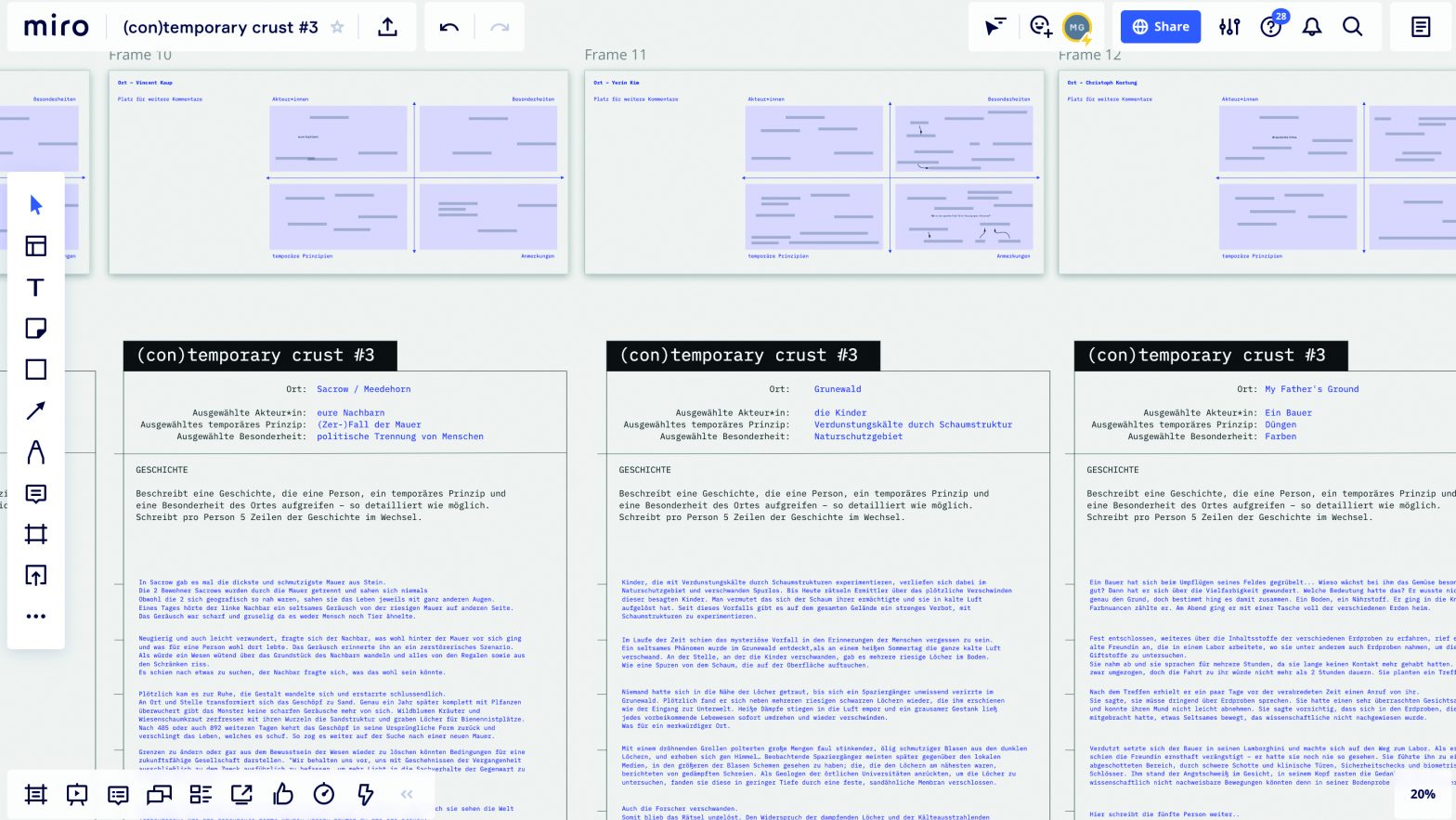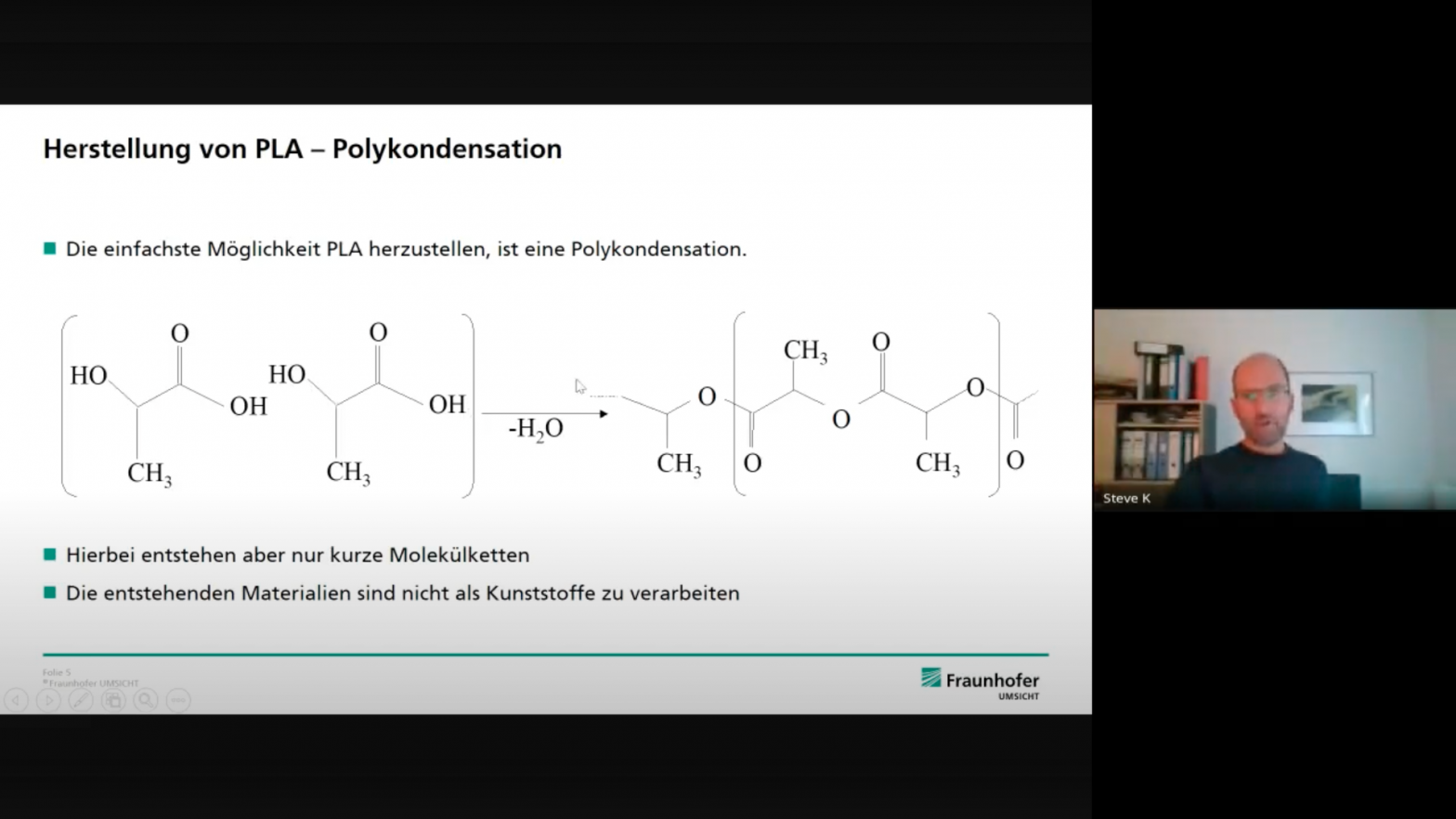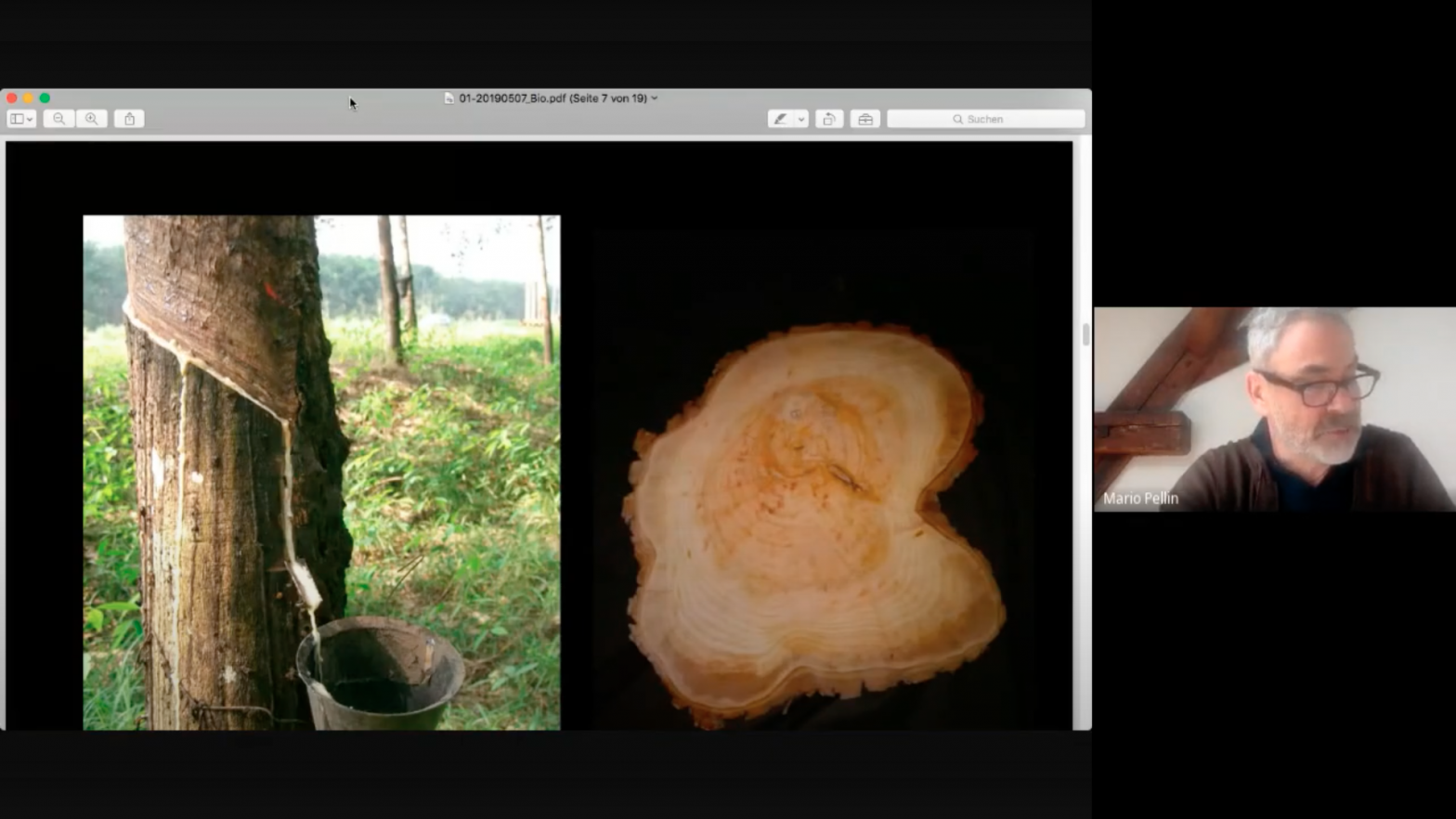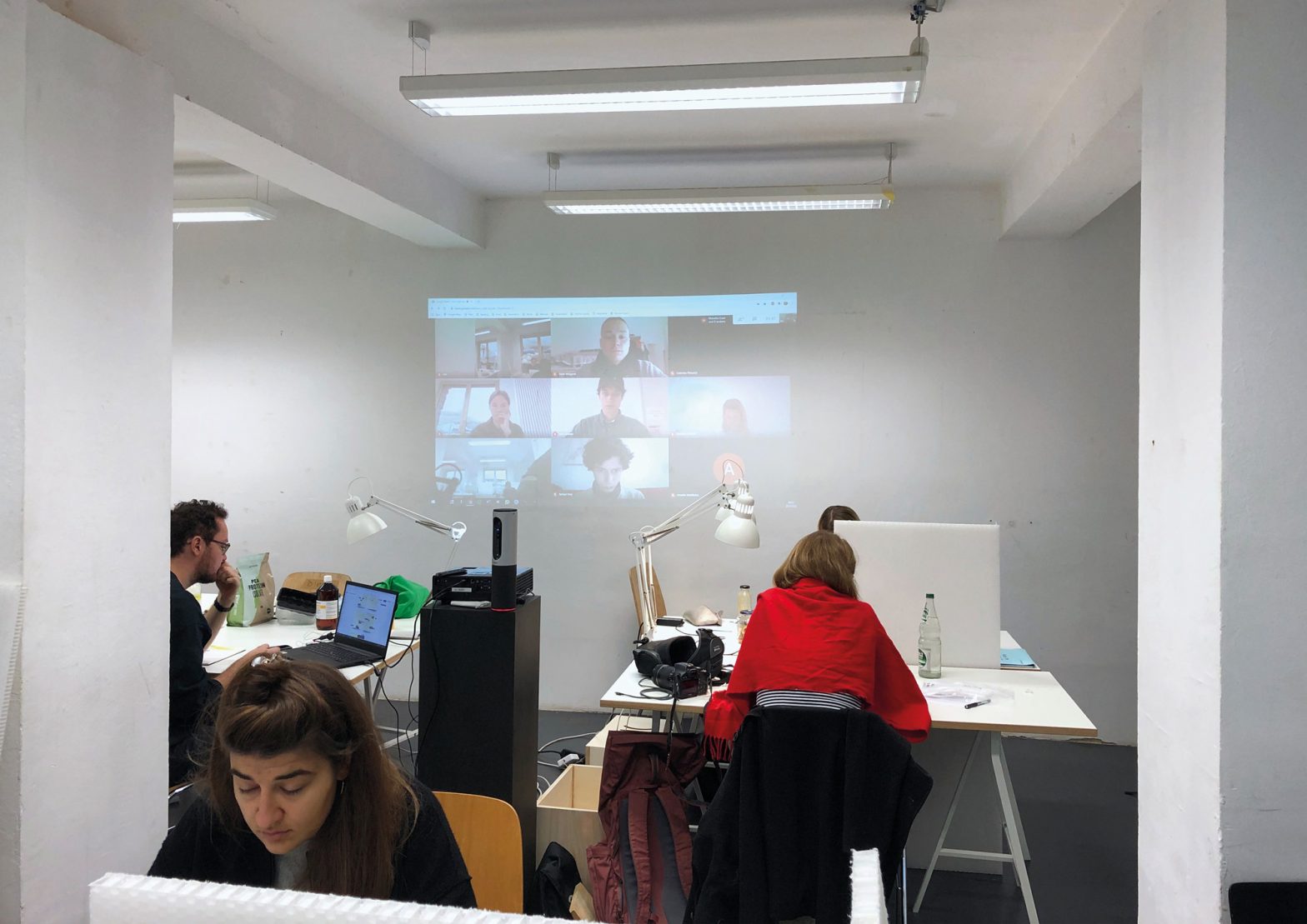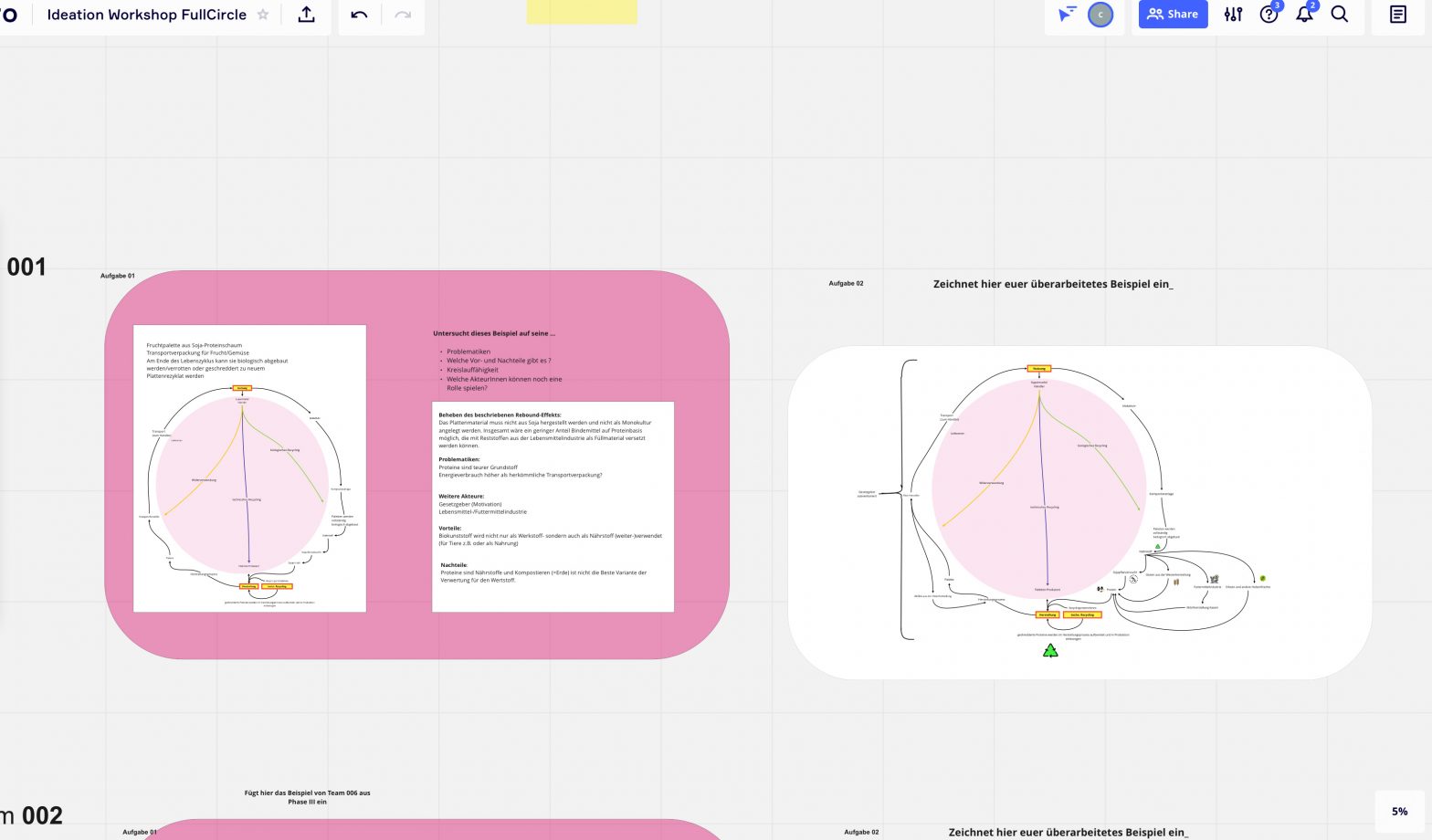SESSION #2 – TEMPORARY STRUCTURES In Session #2 we investigated the soils and mineral resources of the region. The students went in search of specific places in the area and explored them by means of methodically diverse “site visits”. This resulted in precise mapping and depictions of the ephemeral, the permanent and the particular of …
Kategorie-Archive: ZZZ process
SESSION #2 – COMPRESSION MOULDING / EXTRUSION
SESSION #2 – COMPRESSION MOULDING / EXTRUSION 10.04.2021 – Workshop Originally, a workshop was planned on site. We wanted to explore together whether and how it is possible to process local soil materials in different serial technologies. The aim was to get to know different technologies such as extrusion and compression moulding, including mould making …
SESSION #2 – METASTABIL
SESSION #2 – METASTABIL 11.05.2021 – lecture by Andreas Wagner Andreas Wagner, industrial designer and part of the BurgMaterial team, has graduated at the BURG on the topic of metastability.He gave a great insight into his design research on structures and constructions that dissassemble after a while or are designed to be dissembled by us …
SESSION #3 – (CON)TEMPORARY CRUST
SESSION #3 – (CON)TEMPORARY CRUST In Session #3, the task was to translate the site visits and experiments into concepts of temporary objects/structures — inspired by the material’s place of origin. This session was supported by an ideation workshop, which gave insights into methods of collaborative storytelling. In the end, temporary objects were created in …
SESSION #3 – SITE VISITS
SESSION #3 – SITE VISITS Field research The task was to visit a place of one’s own choice situated within a reachable distance. The choice should be made on the basis of the soil and the location, the people, the stories, the history and what is special about the place.In order to get to know …
SESSION #3 – IDEATION WORKSHOP
SESSION #3 – IDEATION WORKSHOP Still only being able to meet up digitally we transferred also the ideation workshop into the digital world.During the digital site visit presentations, we all together collected the following key aspects for each place: stakeholders, the special, temporal aspects, comments – using a collaborative miro board. Picking out (randomly) one …
BIOPLASTICS CONFERENCE
BIOPLASTICS CONFERENCE 12.10.2020 – invited experts spoke about the respective bioplastics At the start of the project, invited experts, entrepreneurs and scientists presented the different bioplastics with which we intended to work on during the semester. Subsequent to this online conference, the students chose a bioplastic for which they were to develop circulating applications. Protein …
CIRCULARITY CONFERENCE
CIRCULARITY CONFERENCE 20.10.2020 – invited experts spoke about circularity possibilities and hurdles During a one-day digital conference we discussed the complex aspects of circulating materials, especially bioplastics, with invited experts from different fields: Manuel Bickel, Wuppertal InstituteManuel Bickel from the sustainable consumption and production division highlighted the complexity of the sustainability assessment of plastics. For …
TALKS & ESSAYS ON CIRCULARITY ASPECTS
TALKS & ESSAYS ON CIRCULARITY ASPECTS Which material cycling strategies / models are there? How do they differ? What does mechanical recycling of plastics mean? > Principles, comparisons, advantages and disadvantages, research and the future What does chemical recycling of plastics mean? > Principles, comparisons, advantages and disadvantages, research and the future What are the …
IDEATION WORKSHOP
IDEATION WORKSHOP 28.10.2020 – the master students carried out an ideation workshop During the third week of the semester, the master students prepared an ideation workshop for the project. The basic goal of the workshop was to develop a variety of ideas for concrete products with concrete cycles for the different bioplastics together with all …

